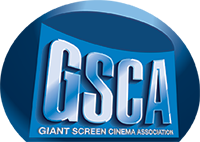Most GS productions set up their digital cameras to shoot in a raw image format. Shooting raw is the best approach for giant screen, as it maintains maximum image quality.
A raw image is largely unprocessed camera sensor data, with 10-, 12-, 14-, or 16-bit sampling, and a minimal amount of processing and compression to get from analog to digital.
Such raw images can be either recorded with minimum compression (such as RED-CODE raw at 3:1 to 12:1 wavelet compression) or uncompressed by going to an off-board recorder such as the CODEX. (This is the case with the Arri 65, Canon c500/c300 MkII, or Panasonic VARICAM 35.)
Check your camera for its ability to make a simultaneous HD recording for playback and/or editing, with correct time codes, without transcoding.
Raw files (whether compressed or uncompressed) are relatively large and require significant processing power, as well as very fast RAID storage arrays to play back the footage in real time.
Some filmmakers find editing in this file format to be difficult and cost prohibitive, and may prefer a traditional offline/online workflow where the raw files are transcoded into proxies (such as ProRes for FCP or DnX for Avid) for offline editing.
These proxies can serve as both the on-set dailies and media for editorial. On 3D productions, best practice is to create the proxies in at least HD quality (although 4K should also be considered), or a workable 3D format such as Avid’s Media Composer 3D tool set. Proxies should be stored on separate hard drives from the raw media to prevent confusion.
Original camera raw images are then used for the final online edit.
Special care must be taken to ensure that the file names and time codes match exactly between the proxies and raw files. In the online process, raw files are used to complete deBayering and color timing from the original raw data. Matching file names and time codes allows for fast relinking of media, which generally saves thousands of dollars compared to manually relinking each file.
Most digital cameras shoot with a SMPTE-based time code. However, the IMAX digital camera based on Vision Research’s Phantom 65 shoots with iRIG (scientific) time code. When using this camera, it is critical to compare how the proxy software translates the time code into SMPTE against the way the final color correction program makes the conversion. If the results do not match, a choice must be made between changing software solutions or allowing more time and budget to manually conform the locked edit with the raw footage.
 Forward to 11. Metadata Management
Forward to 11. Metadata Management
 Forward to 14. Import of Offline Proxies
Forward to 14. Import of Offline Proxies

